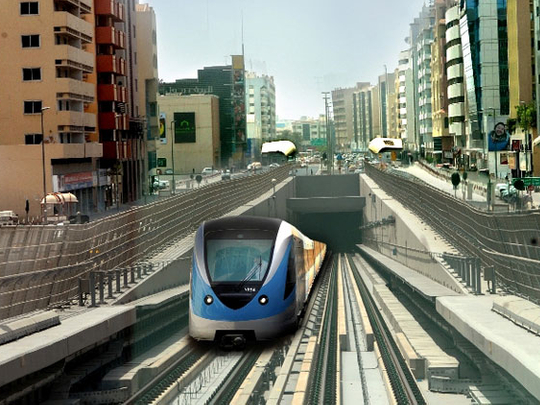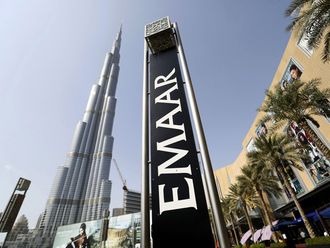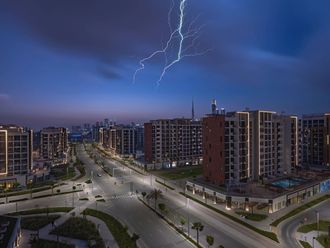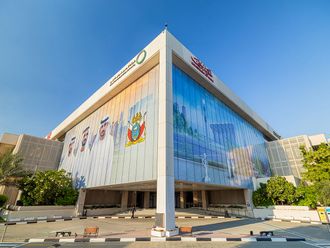
Dubai: Living near the Dubai Metro is proving to be a convenient option for most people who don’t drive. With a metro stop just a few steps away, going about one’s business gets a lot easier, even without the convenience of a personal car.
According to the Dubai Metro website, commuters spend only at most 3.5 minutes while waiting for the train to arrive, the longest time spent waiting for a train in Dubai.
That’s a huge difference from New York’s subways, where passengers can wait up to 14 minutes.
That’s why moving closer to a train station sounds like the most logical thing to do. However, flats along the metro line can be very expensive, so the best approach for those looking for a most convenient change is to do a little bit of homework.
Click here to see the average rents near Metro stations
Rental rates along Dubai’s main public transport system tend to get cheaper the further away you get from the city centre, with the ones on the green line showing the most wallet-friendly accommodations.
A recently released map prepared by Propertyfinder Group, which details the rents in various locations along the metro, showed that flats in Al Nahda and Stadium aren’t only accessible by train, they offer the cheapest options, with leasing rates for one-bed properties in these areas averaging at Dh52,000 a year.
For those who want to live along Shaikh Zayed Road and have access to the metro at the same time, they can find the second-cheapest flats near the First Gulf Bank station, where rates for two-bed apartments stand at Dh54,000.
The third-cheapest flats can be found in Al Qusais, costing an average of Dh56,000, while the third-best option will be the Dubai Airport Free Zone, where one-bedroom units are going for Dh56,500.
In most cases, potential tenants are likely to find apartments that are the most expensive in Al Jadaf area and Etisalat, where rents average Dh142,-000, the costliest among flats close to the metro.
Other areas like Dubai Healthcare City, where flats cost Dh120,000 a year, and World Trade Centre, where average rents stand at Dh130,000, are also considered a more expensive option.
Here’ s a ranking of rental values (in dirhams) for one-bedroom flats along the Dubai Metro:
10 cheapest areas to rent
1. Al Nahda, Stadium: 52,000
2. FGB: 54,000
3. Al Qusais: 56,000
4. Dubai Aiport free Zone: 56,500
5. Energy, Danube, UAE Exchange: 62,000
6. Nakheel Harbour and Tower: 63,000
7. Noor Bank: 64,000
8. Al Qiyadah, Abu Hail, Abu Baker Siddique: 65,000
9. Ibn Battuta: 69,000
10. Palm Deira, Al Ras: 73,000
14 costliest places to rent
1. Al Jadaf, Etisalat: 142,000
2. World Trade Centre: 130,000
3. Dubai Healthcare City: 120,000
4. Nakheel: 119,000
5. Burj Khalifa: 115,000
6. Emirates Towers, Financial Centre: 106,000
7. Damac (formerly known as Dubai Marina) 98,000
8. Al Jafiliyah, Business Bay: 89,000
9. Mall of the Emirates, Sharaf DG, Oud Metha: 85,000
10. Jumeirah Lakes Towers: 83,000
11. Dubai Internet City, Al Ghubaiba, Al Fahidi: 79,000
12. Salah Al Din, Baniyas Square, Burjuman, ADCB (Karama): 76,000
13. Union: 75,000
14. Creek: 74,000
Source: Propertyfinder Group












